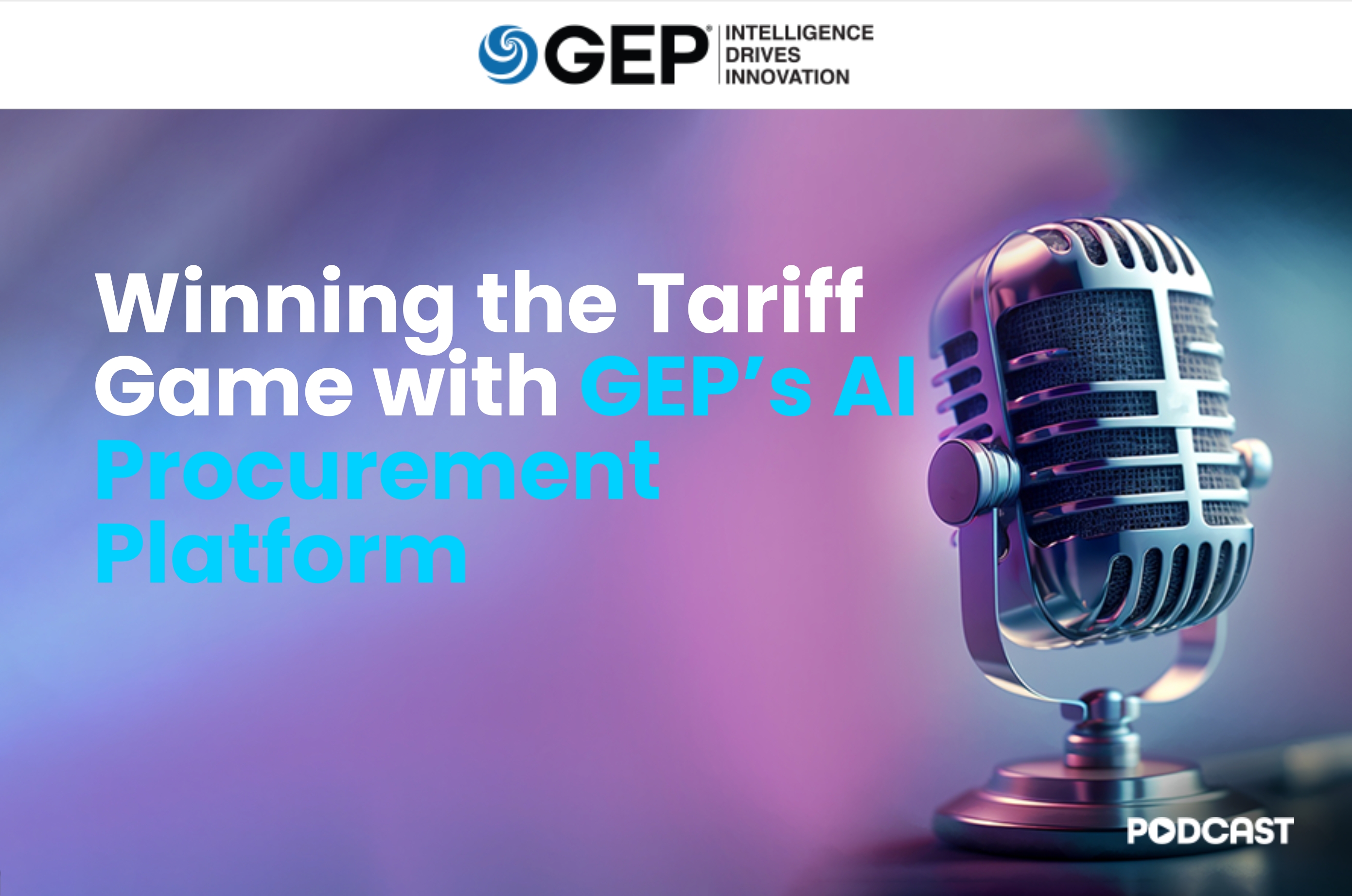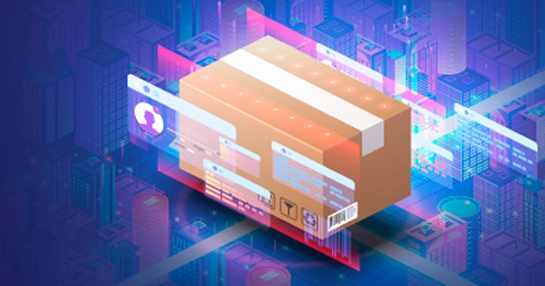-
GEP Software
-
- Procurement Software
- Direct Procurement Software
- Indirect Procurement Software
- Unified Source-to-Pay
- Source-To-Contract Software
- Procure-to-Pay
- Midsize & High Growth Enterprises
- Key Capabilities
- Spend Analysis
- Sourcing
- Contract Lifecycle Management
- Supplier Lifecycle Management
- Third-Party Risk Management
- Purchasing
- Payments
- Data Analytics and Reporting
- Do more with GEP SMART
- Intake Management & Orchestration
- Intelligent Category Management
- Tail Spend Management
- Cost Data & Analytics (GEP COSTDRIVERS)
- AI-First Supply Chain Management
- Supply Chain Visibility and Execution
- Logistics Visibility
- Inventory and Warehouse Management
- GEP Multienterprise Collaboration Network
- Supply Chain Control Tower
- Field Services
- Supply Chain Collaboration & Planning
- Supply Chain Planning
- Purchase Order Collaboration
- Forecast Collaboration
- Capacity Collaboration
- Quality Management Software
- Should-Cost Modeling
- Direct Material Sourcing
-
-
GEP Strategy
-
GEP Strategy
Unrivaled supply chain and procurement expertise + the transformative power of AI
Supply Chain Consulting
- Environmental, Social and Governance
- Sustainability Consulting Services
- Socially Responsible Sourcing
- Scope 3
- Demand and Supply Chain Planning
- Collaborative Planning
- Source To Contract
- Procure To Pay
- Inventory Strategy & Management
- Operations & Manufacturing Excellence
- GEP Total Inventory Management Solution
- Network Strategy & Optimization
- Warehousing & Transportation Management
-
-
GEP Managed Services
-
GEP Managed Services
World-class skills, experience and know-how — amplified by the power of AI
-


Winning the Tariff Game With GEP’s AI Procurement Platform
Tariff changes can upend supply chains — inflating costs, disrupting deliveries, and creating chaos across supplier networks. This episode explores how procurement leaders are transforming that volatility into a source of resilience and opportunity.
Drawing on insights from the latest GEP white paper, the discussion reveals how real-time visibility, predictive modeling, and AI-driven analysis are helping organizations stay one step ahead of tariff shocks — protecting margins and powering smarter decisions.
What You’ll Hear:
- How AI-enabled platforms deliver instant visibility into supplier risks, spend exposure, and tariff impacts
- The practical playbook leading companies use — from real-time supplier alerts to scenario modeling and total landed cost visibility
- Why tariff agility is becoming a long-term competitive advantage, not just a short-term fix
Listen now to learn how top procurement teams are using data, AI, and insight to turn uncertainty into strength.
This is a audio recording of a recent podcast.
PODCAST SUMMARY
1. What Makes Tariff Shocks So Dangerous for Procurement?
Tariffs can change overnight with little or no warning. One announcement can ripple through your supply chain, inflating costs and disrupting deliveries in ways you don’t see until it’s too late. This episode dives into how procurement leaders are turning that unpredictability into a manageable—and sometimes strategic—advantage.
The key? Real-time visibility. Platforms like GEP SMART pull together spend data, supplier risk profiles, and live market conditions into a single view. So when a new duty hits—say on imported steel—you instantly see which suppliers and categories are at risk, plus potential alternatives in unaffected regions. No scrambling, no blind spots.
And it’s not just about reacting fast. With AI-driven analysis, procurement teams can anticipate risks, model financial impacts, and even design sourcing strategies before a tariff takes effect. The payoff is huge: stronger cost control, better supplier diversification, and a supply chain that’s ready to flex when the rules change.
2. How Are Leading Companies Staying Ahead of Tariff Changes?
Here’s where the strategies get practical. The podcast breaks down three core capabilities already in play:
Real-Time Supplier Impact Alerts: The moment a tariff changes, the system highlights affected suppliers and suggests replacements in unaffected markets. An automotive manufacturer could use this to pivot quickly if electronic component costs spike.
Scenario Planning That Saves Margins: Companies simulate “what-if” tariff situations before they happen. This means they can pre-qualify new suppliers, renegotiate contracts, or adjust production schedules—avoiding last-minute crises.
Total Landed Cost (TLC) Visibility: True costs go beyond unit price. By factoring in duties, freight, customs, and storage, companies avoid false economies. A supplier with a lower sticker price may end up more expensive overall once all charges are included.
Put together, these capabilities give procurement teams a faster, smarter, and more resilient way to respond to tariff volatility. And in a high-stakes global market, that’s not just helpful—it’s essential.
3. What’s the Long-Term Play for Procurement Leaders?
Short-term fixes aren’t enough. Tariffs are part of a bigger trend of trade unpredictability, and procurement leaders need systems that work in both crisis mode and steady state.
That starts with investing in integrated, AI-powered procurement platforms that deliver instant insight and predictive modeling. It also means building processes that keep suppliers diversified, contracts flexible, and decision-making rooted in real data.
As the podcast makes clear, this is about turning a threat into an advantage. Companies that master tariff agility won’t just protect margins—they’ll win market share when slower competitors are still scrambling.
The final takeaway? Tariff uncertainty isn’t going away. But with the right visibility, modeling, and cost analysis tools, you can stop treating it as a danger and start using it as a competitive edge. The GEP white paper featured in this episode lays out the practical steps to make that happen.
TO LISTEN, Please Enter your EMAIL ID
JUST A FEW MORE THINGS ABOUT YOU









